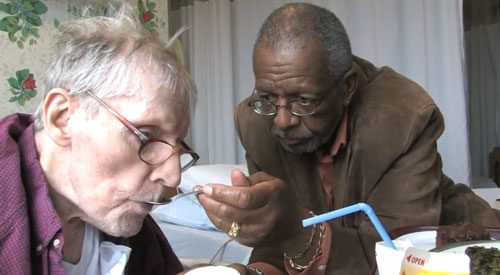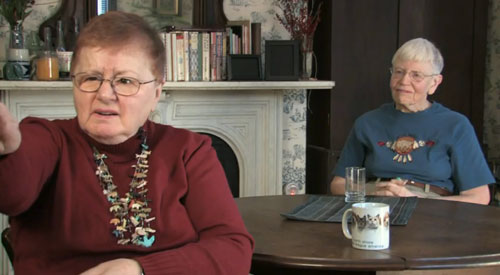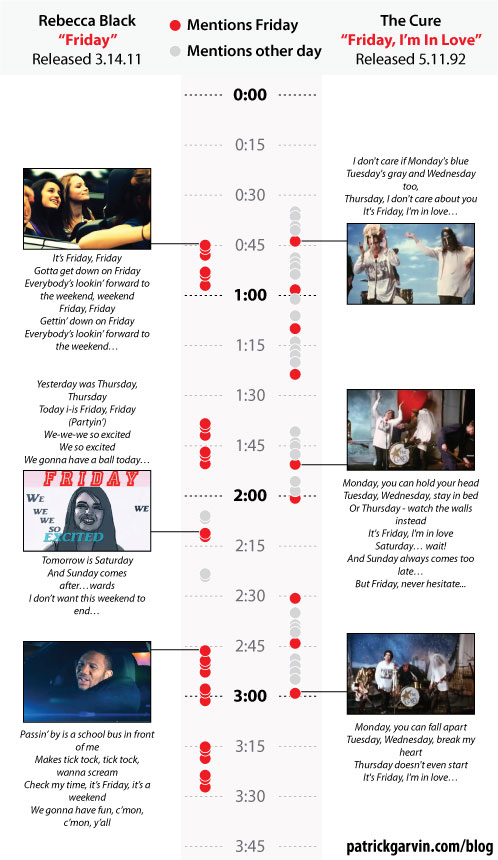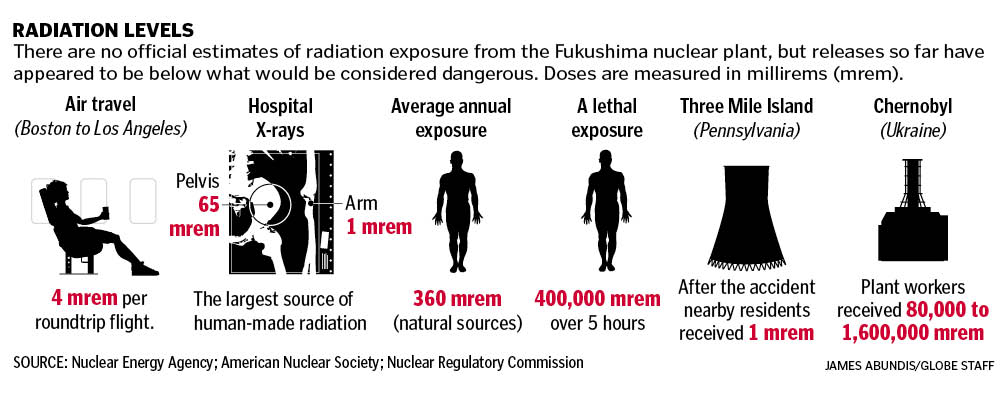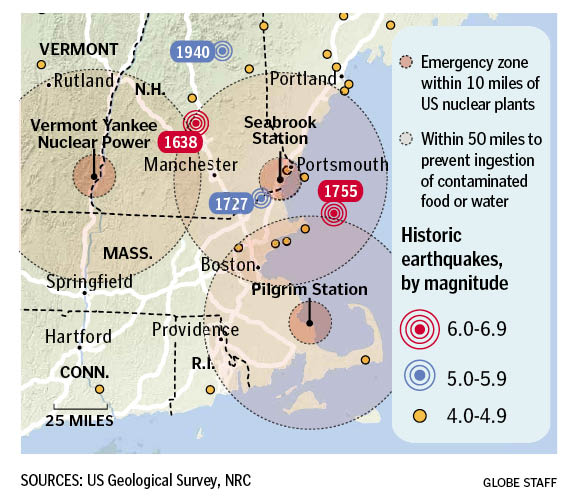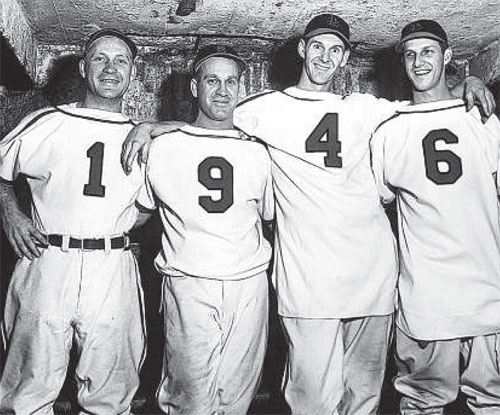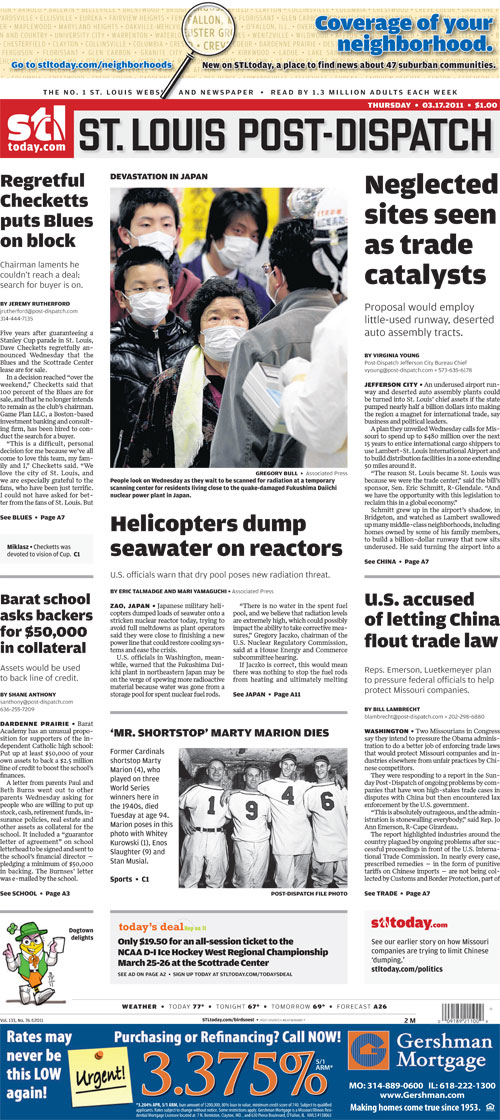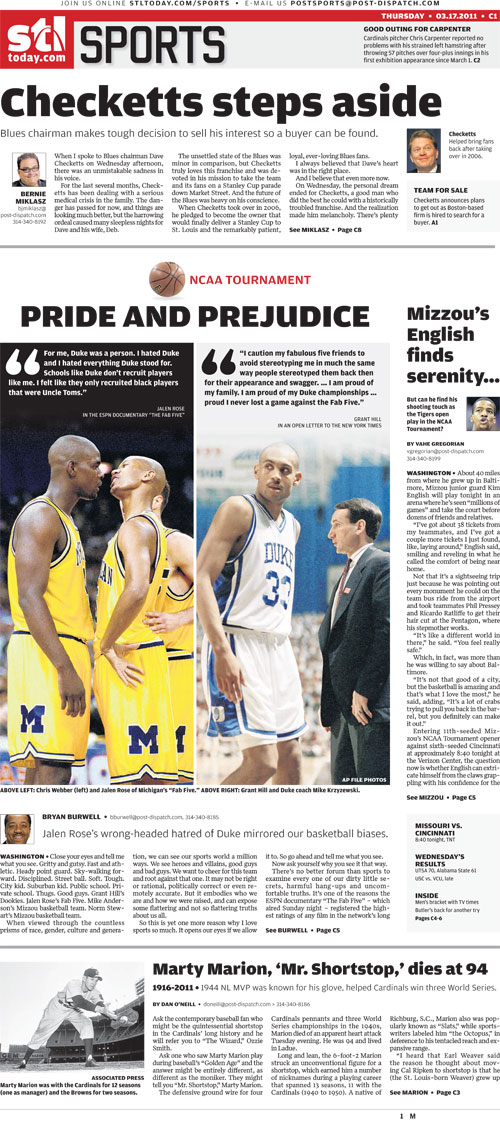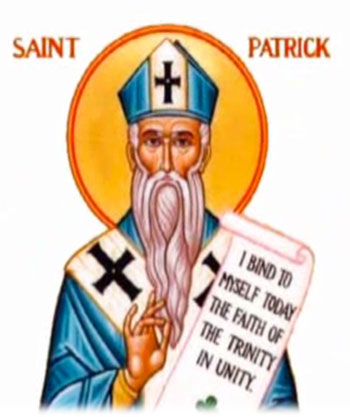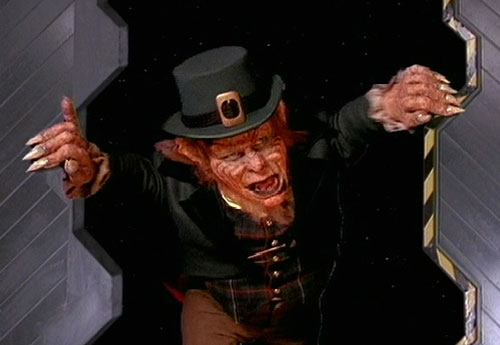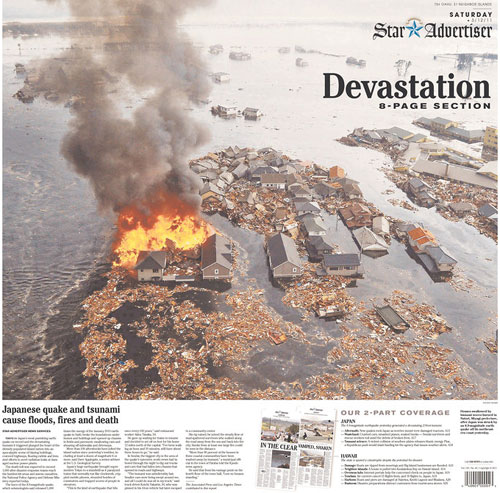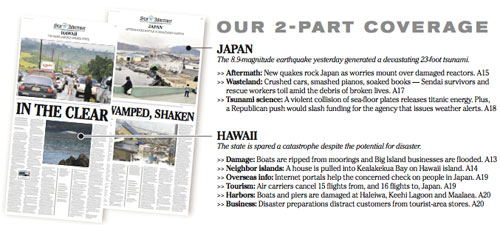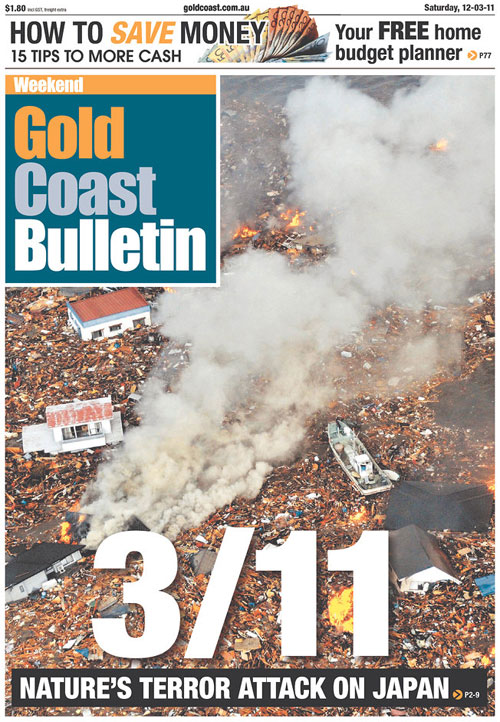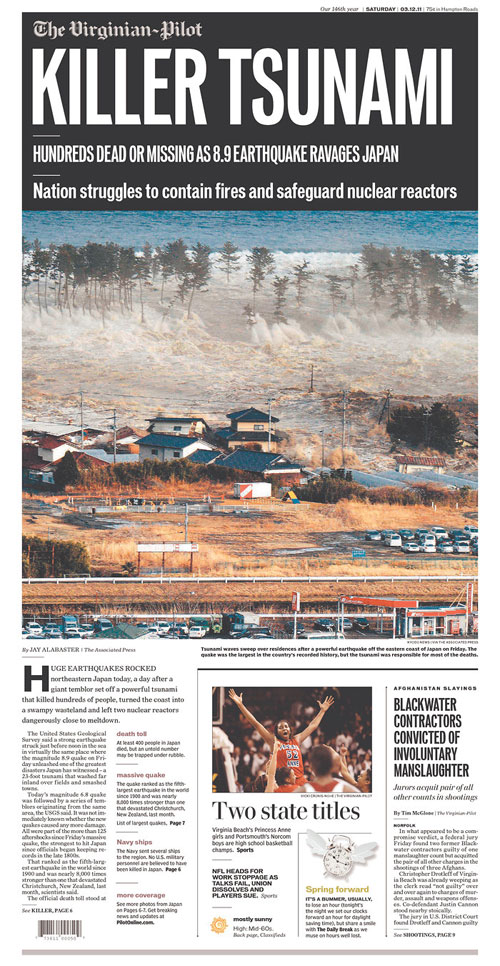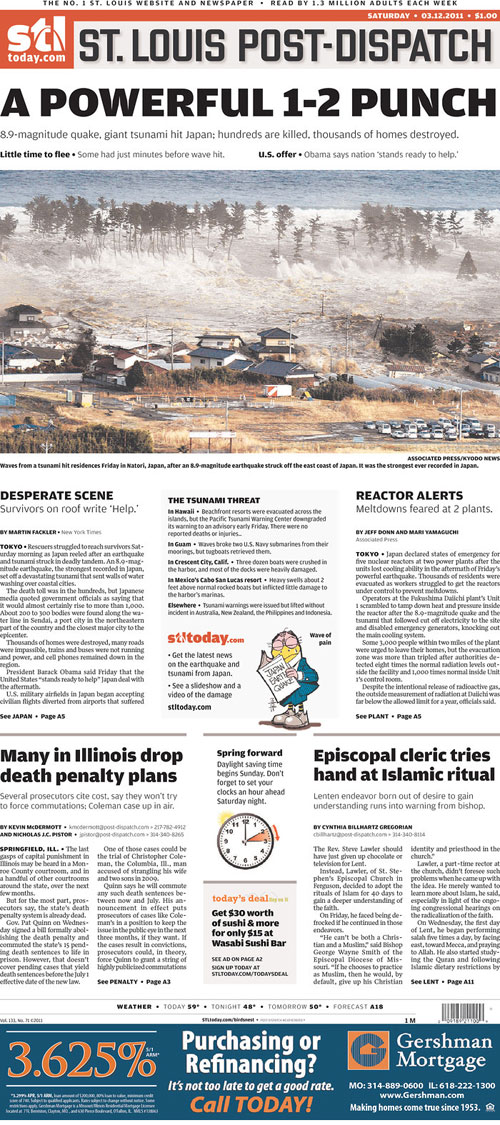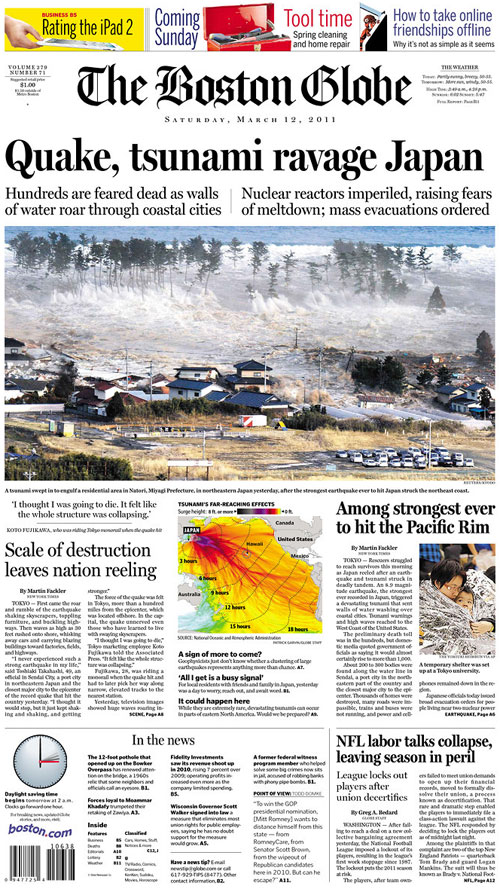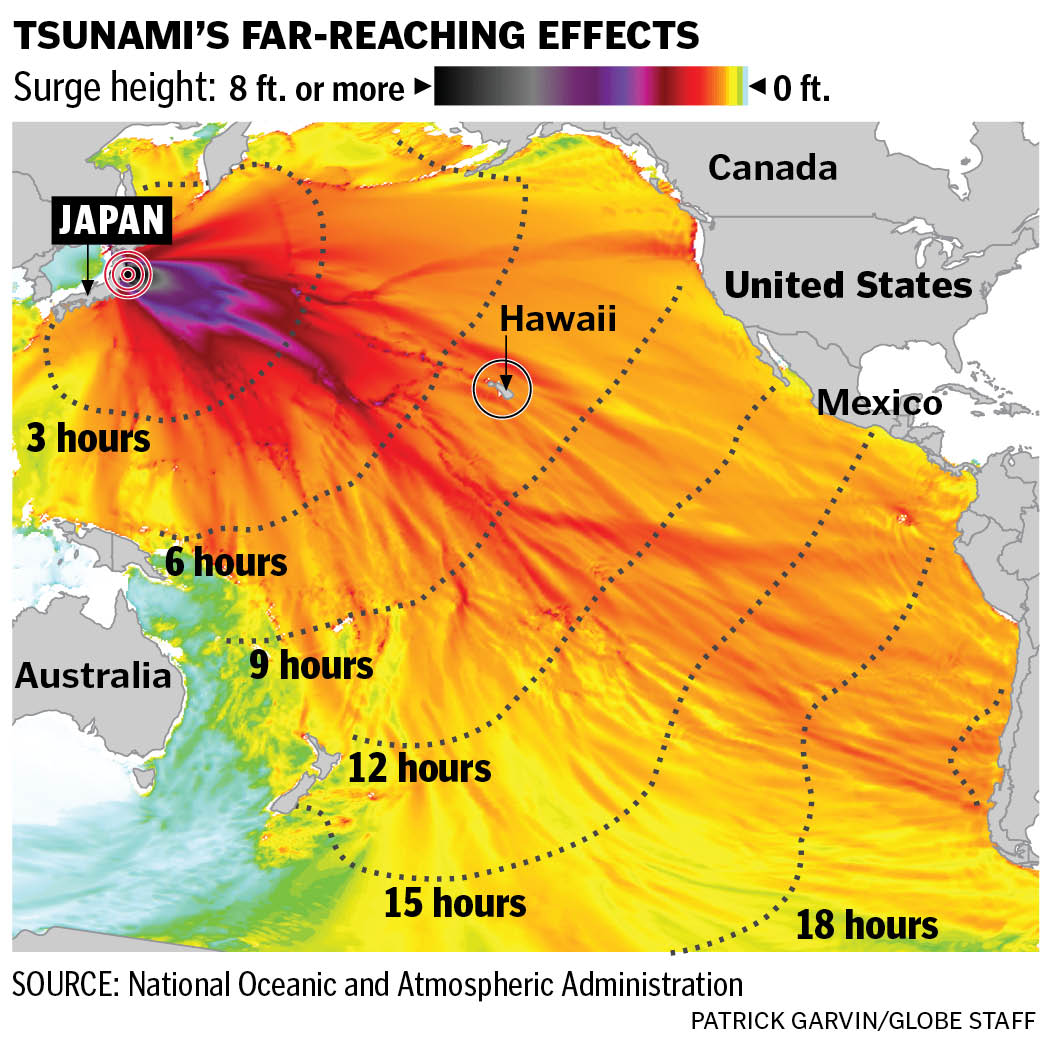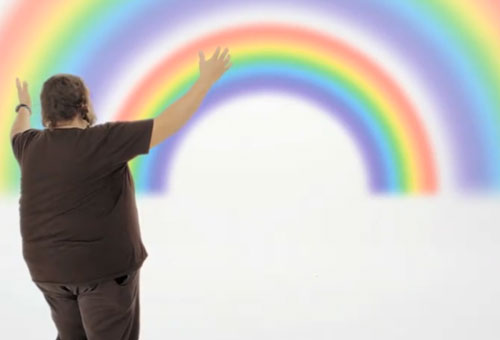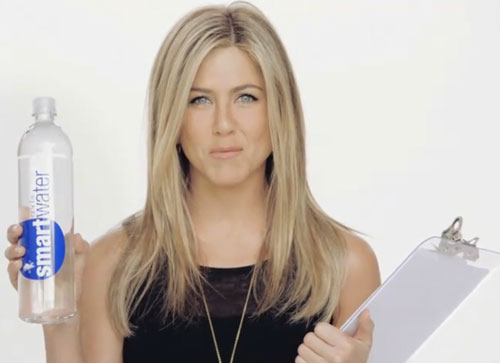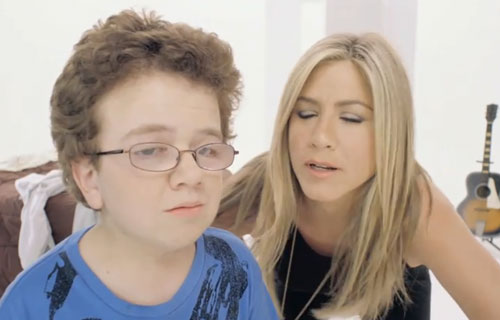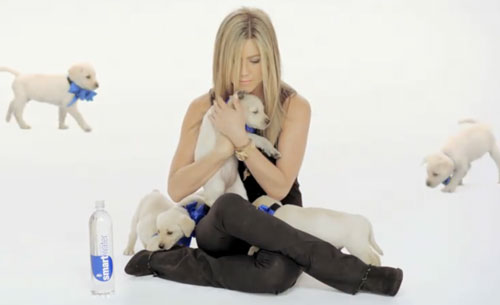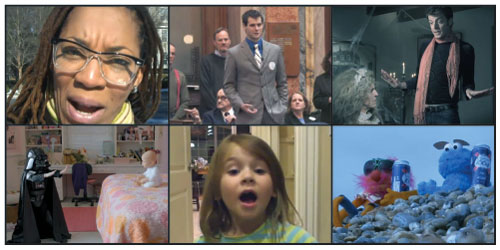This week, the Missouri School of Journalism launched Project 573, a multi-disciplined, multimedia reporting project put together by 12 seniors representing the School of Journalism’s six sequences: broadcast, convergence, magazine, photojournalism, print and strategic communication.
They decided to report on the recession of the last few years and how it’s affected American life. The result is “The American Response,” which will be updated throughout the next few months. When it launched Monday, it already had photo galleries, videos, narratives and infographics. There’s even an interactive game.
Project 573 (so named for the area code) was put together by 12 seniors, overseen by two faculty advisers, Reuben Stern and Jacqui Banaszynski. I had both Reuben and Jacqui when I attended Mizzou’s J-school. It’s because of Reuben that I took my first infographics class and chose this path.
The project was conceived by Evan Bush and Adam Falk. I was impressed by the project, especially when you realize that the Kirk and Spock of the project were seniors who had all sorts of other things going on. I remember my capstone semester in college, and I barely could function well enough to remember to eat or get gas in the car, let alone run a project like this one. So, I wanted to get their perspectives. Evan took some time to answer my questions, the answers to which are below.
—————
How did you guys come up with Project 573?
The project was kind of a weird moment of serendipity. Adam [Falk] and I are roommates and we spend a lot of time on “shop talk” around the house. But the project was actually fleshed out in an excited text message/ Gchat conversation. Adam was at a journalism conference, and I texted him something like, “We need to make a documentary.” Just an off-the-cuff idea I’d had. Adam quickly reminded me that the J-school probably wouldn’t let us take a year off to shoot a documentary and that a collaboration with students of other interest areas would be much more interesting.
In New York, the conference Adam attended was about the future of journalism education. I think the wheels started turning for him there; he came back jazzed on journalism and couldn’t shut up about the conference.
So we took a step back, and the day he came back, hashed out the guts of our plan in a G-Chat conversation while Adam was at work and I was in class.
I had a lunch date with a couple of other students and Dean Mills. I just jumped in and said I’d been kicking around a crazy idea–that we could bring all the sequences at the J-school together for a big happy journalism mess. Dean had been at the New York conference with Adam, so they were sort of familiar with each other.
I told him we would like to meet with him. He agreed for the next week, and then the planning began.
—————
How did you pitch this? How was it received?
Adam and I went to Dean’s office just bubbling with excitement and energy. We took about an hour to get ready for school that day–like we were going to a senior prom or something. We practiced a basic elevator speech at home and tried not to get too excited.
When we walked in, we made small talk for a few minutes and we didn’t get halfway through the pitch before he jumped in with basic questions. We’d expected this thing to be a fight and we’d have to have a lot of ammo.
After a couple of easy questions, he said something to the effect of, “Sounds great, let’s take the next step.”
We kind of looked at each other like, “Uh…is that a yes…and if so…let’s figure out a couple of next steps.”
It kind of felt like he’d already made up his mind before we’d even stepped foot in his office.
We’ve had a lot of feelings like that in Dean’s office. We’ll get geared up for a big pitch to him and then walk into his office and he’s already excited and ready to support us however he can.
—————
How did the other 10 seniors get involved with Project 573?
The hardest pitches we’ve made were to students, although pretty much everyone we talked to was interested right away. We contacted students individually based on our experiences with them in classes and seeing people’s work out there. We asked professors for recommendations. We came up a one-sheet pitch to give people.
Adam and I met with them individually, gave them a basic elevator speech, answered questions and let them take a few days to decide. Pretty much everyone we contacted was interested right away and it usually became a logistics question–how the heck are we going to get everybody Capstone credit in an established system.
It took a lot of work to make sure everyone could fit into a schedule and graduate on time.
—————
How did you divvy up the workload among the group?
It was a process. We didn’t know what we were doing as managers right away and weren’t comfortable taking complete ownership over a group project. We thought it was going to be really important to get everyone on board with the idea and then go from there. For the first few weeks, we had really vague discussions about what we as a group wanted the project to be.
Everyone was really interested in a truly collaborative process, but it became clear that at some level they needed someone to drive the boat. Adam and I decided to be co-editors with the group’s support and take that role so people would feel comfortable with a structure.
After that, things became more collaborative and everyone started to feel more comfortable. We all brainstormed an organizational structure where we divvied out administrative workload. We decided that everyone would be reporting, editing and either designing or helping conceptualize design.
I’d read a bit about Google’s 20% model. Basically, Googlers get to use 20% of their time however they choose as long as it fits within the mission of Google. We put that in place right before winter break and people have taken ownership of some supplementary things we call “pet projects.” For example, all of our bio videos were produced by Alex Rozier, who chose working on them as his pet project.
—————
How long had you been working on this before you went live?
We spent one semester in a one-hour class conceptualizing, planning, pre-reporting and designing a website. But any true reporting and web development began the last week of January when we put our noses to the grindstone and began going out into the community and working on stories.
—————
What kind of hurdles did you experience when working on this?
Woof. What a question.
First off, Adam and I had little to no experience in management. But we were confident (read: stupid) enough to give it a shot. Learning on the fly when 10 people are expecting results from you has its ups and downs. We have learned more about group dynamics, how to get people excited, how to lead meetings, and how to execute an idea more than any Business 4000 class could ever teach you. We were fortunate enough to recruit patient and forgiving people that liked us (or pretended to at least) enough to stick it out when we didn’t know what the heck we were doing.
Kind of along those lines, getting people on board with this thing was tough. Our class in the Fall met for one hour each week at 8 a.m. No amount of coffee was going to get everybody pumped about Project 573 consistently each class session at that time. We worked really hard at making sure everyone was involved in all the big decisions and that they began to feel ownership of this project. We had to transfer ownership from the two of us, to everyone else. By the end of the Fall semester, we’d begun to feel really confident about the way the group was starting to gel and take initiative. At the end of the semester, we had a 4-hour meeting outside of class on a Saturday. Best decision we made. Everything kind of culminated and we came together as a group. That was the moment we knew everyone was on board and ready to get out there and report.
Settling on a topic took about 8 weeks. To get everyone on board, we needed something universal, and something every reporter could get behind. So we spent a lot of time talking about what we valued in journalism. In the end, our group decided that we wanted to focus our reporting on people and universal themes.
We wanted to report on something that we would have an advantage covering in Missouri, but that would resonate on a national level. So we settled on telling the story of the economy in the heartland.
Equipment was a challenge. We wanted to shoot video on DSLRs–Nikon D7000s–because we felt like we could get more camera for the J-school’s buck. And we definitely did, but we didn’t know the equipment.
Adam, myself, Andrew Feiler and Dan Brenner came up with an equipment list that basically amounted to endless Googling of photography and videography blogs. The equipment we’re using took a lot of time to put together and is unlike anything the J-school currently has. It’s amazing stuff, but it has quirks no one at Mizzou really knows how to fix.
—————
What was easier than you expected?
Convincing the dean. Finding a developer. We found a guy to develop our site for free because he needed a portfolio piece. He is an absolute animal and stayed up for about 3 days finishing our site recently. He gets the web, understands journalism, and has been a pleasure to work with. All for free. Could we have stumbled into a better deal? Public Service Announcement: Josh Smith. Hire him yesterday.
—————
What surprises came up that you weren’t expecting?
We asked Jacqui Banaszynski to guest lecture for our class. She’s a Pullitzer-prize winning journalist who coaches writing at Mizzou. She came into Project 573 and gave a quick chat that had everyone’s jaws touching their desks. A month and a half later, she agreed to help with story coaching. Basically, she helps our reporters conceptualize stories and brainstorm how to tell them. And she suggests ways to improve stories as they come along.
—————
You blogged and Tweeted with this project way before Project 573’s March 14 launch date. How did this help you lay the groundwork and get interest in the community?
Community engagement is something we thought was incredibly important to start with. It’s something we didn’t know enough about and kind of did a lot of trial and error to get figured out. We have an amazing strategic communications student, Campbell Massie, working on the project. The three of us have talked a lot about improving engagement. It’s a new area for all of us, and we’ve been experimenting with it. Having an online presence was very important to us, but it was hard to justify that without content. We started a blog and started pushing that out as a way to engage with people, find an audience and get connected with social media.
—————
When putting this project together, from whom, where or what did you draw inspiration?
First, we looked at top student multimedia projects that we thought had similar ideas to us. We wanted a mark set that we could shoot for. Not to pigeonhole us as student journalists, but with full class schedules and the limitations of a college life, we wanted to set expectations that were attainable, yet of the highest quality. We drew inspiration from University of North Carolina’s Powering a Nation and the Soul of Athens project at the University of Ohio. We sought out some of the students who had worked on those projects and had gone onto professional careers in multimedia and chatted with them about what to expect.
After that, it’s a mixed bag of things we thought were awesome journalism. NPR’s Planet Money helped us understand broad economic concepts. The New York Times has some fantastic multimedia work in One in 8 Million and a variety of other projects. Little video blogs like Californiaisaplace were great examples of storytelling and compelling shooting.
Inspiration came from anywhere and everywhere. It just had to have a core that focused on dynamic, well-reported storytelling.
—————
What plans are there for this project to continue after you all graduate and move on with your careers?
We don’t have anything hard and fast lined up, but a big part of this project has been trying to find juniors to take the mantle over. One of our group member’s pet projects is to recruit new, talented students to take ownership of Project 573 and take it from here. We have a handful of people that have shown interest and expect to have more interested following the launch.
A lot of the professors in the J-school think this project is important and some have expressed interest in helping that continue. Entrepreneurship and innovation are becoming hot words at Mizzou right now, and we hope this will open the floodgates for plenty more projects with bold goals and students at the helm.
—————
If you’re hiring this spring, consider these students. Seriously. Be sure to check out the “Meet The Team” bios on each person. Their candid videos about the future of journalism shows their excitement for trial and error. These students have some interesting ideas and don’t seem to be afraid of the possibilities. That’s pretty refreshing, and inspiring.
